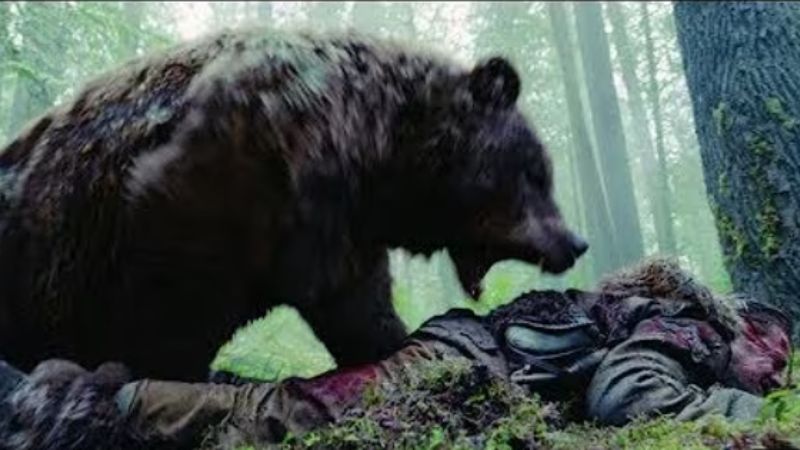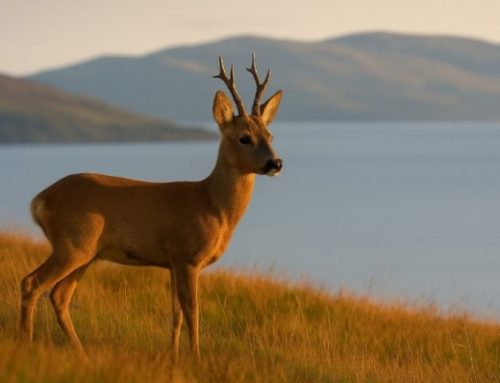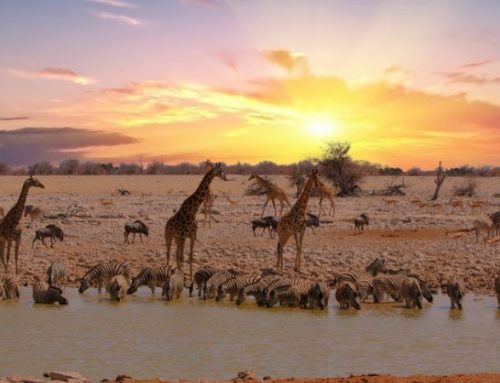Hunting and Cinema: hunting has always inspired cinema, not only as a practical act, but as a powerful metaphor for the human condition.
In cinematic storytelling, hunting often takes on a symbolic meaning: it is instinct and awareness, respect and confrontation, immersion in nature and acknowledgment of one’s limits. Many great directors have captured this deeper dimension, transforming hunting scenes into moments of truth, revealing the nobility, struggle, and beauty of an ancient practice.
Here are ten memorable films where hunting becomes much more than just an activity: it becomes visual poetry, ethical reflection, and a celebration of the unbreakable bond between man and nature.
Moby Dick (1956)
Based on the famous novel by Herman Melville, the film directed by John Huston brings the obsessive and tragic figure of Captain Ahab to the screen. His hunt for the legendary white whale is not just a physical pursuit but a descent into the abyss of his own soul.
The whale becomes the image of an elusive destiny; the hunt a cry against the limits of the human condition. The screenplay, written by Ray Bradbury, powerfully conveys the novel’s epic spirit. It’s a story about pride, stubbornness, and the untamed beauty of the sea and its creatures.
Hatari! (1962)
An adventure film directed by Howard Hawks and starring the iconic John Wayne, set in a majestic and wild Africa. The protagonists capture live animals for zoos, facing spectacular chases and often unpredictable situations. The scenes were filmed with real animals, giving a rare sense of authenticity. Hatari! is a tribute to the skill, dexterity, and coordination of those who live immersed in a natural world that demands respect. No animals are killed — instead, the film teaches understanding, interaction, and coexistence. Henry Mancini’s soundtrack adds a playful and affectionate tone, highlighting the human side of hunting as an art form and dedication.
Jeremiah Johnson (1972)
The legendary Robert Redford plays Jeremiah Johnson, a man who decides to live in solitude in the mountains, embracing the life of a trapper. Hunting here becomes a school of survival and a lesson in listening to nature. The mountains become a silent cathedral, food an honest conquest, and each animal observed or taken is treated with honor. The beauty of the imagery and the understated narrative make this film a hymn to freedom, a Spartan life, and humility in the face of the vast world.
The Deer Hunter (1978)
A masterpiece by Michael Cimino, this film is a profound meditation on friendship, trauma, and redemption. Deer hunting represents a rite that unites the protagonists — a nearly sacred practice requiring discipline, focus, and respect. The “one shot” scene perfectly encapsulates the philosophy of ethical hunting: shoot only when certain, not for vanity but out of necessity. After the horrors of Vietnam, returning to the forest means rediscovering a sense of purity and truth.
Out of Africa (1985)
Based on the autobiography of Karen Blixen, the film tells the story of the bond between the writer and hunter Denys Finch Hatton, portrayed elegantly by Robert Redford. Hunting here is an act of beauty, respect for nature, and harmony with the landscape. Africa is filmed with love and solemnity, and hunting becomes a dance between man and his environment. The scene where the protagonists face a lion is one of the most intense and lyrical, symbolizing courage and mutual understanding.
The Bear (1988)
A touching film by Jean-Jacques Annaud, told from the perspective of two bears. The presence of humans and hunters is never caricatured but represents both conflict and the possibility of empathy. The hunter who chooses to spare the wounded animal demonstrates the potential for ethical, mature, and conscious hunting. Based on the novel by Curwood, the film is an ode to the greatness of animals and human responsibility.
Dances with Wolves (1990)
Directed by and starring Kevin Costner, this epic painting of Native American life includes a sacred and vital buffalo hunt. There is no waste, no cruelty — every part of the animal is used, every prayer is an act of gratitude. Hunting is part of deep spirituality and a circular view of life. The character Dunbar learns the value of measured actions, framed within a cultural context that gives meaning to the hunt.
The Last of the Mohicans (1992)
James Fenimore Cooper’s novel becomes a visually stunning and action-packed film thanks to Michael Mann. Daniel Day-Lewis plays Hawkeye, a hunter and free man raised with Mohican values. Here, hunting represents honor, necessity, and a moral code. The opening scene, where a deer is taken and then honored, is a gesture of profound nobility that sets the ethical tone of the film. Day-Lewis prepared by living like a trapper for months, learning to move through the forest as a true frontiersman.
The Ghost and the Darkness (1996)
Set in Kenya in 1898, the film tells the true story of the hunt for two man-eating lions. Colonel Patterson, played by Val Kilmer, engages in a grueling battle with cunning and fearsome predators. The Tsavo lions have become legendary, and the film turns their story into a tale of courage, intelligence, and determination. Filmed in extreme conditions with many production challenges, it highlights the difficulty and greatness of hunting as defense and collective responsibility.
The Revenant (2015)
Leonardo DiCaprio delivers one of the most intense performances of his career as trapper Hugh Glass. Mauled by a bear and left for dead, Glass fights to survive. Hunting here is a means of staying alive but also reconnecting with one’s spirit. Emmanuel Lubezki’s cinematography provides hauntingly beautiful images, and every detail — from breath in the freezing air to torn skin — conveys the raw truth of a life close to the essential. DiCaprio endured grueling conditions for the role, eating raw meat and surviving in harsh environments. It’s a tribute to the man who does not give up and continues to respect nature even in his darkest hours.
These films teach us that hunting, when approached with respect, intelligence, and heart, is never just an act of strength. It is an existential experience, a way to attune with nature, to rediscover a moral code lost in modern frenzy. Every hunter who has experienced a true day in the mountains, every man who has walked silently at dawn through the woods, will recognize themselves in these stories. Cinema, with its visual and emotional power, has returned to hunting its most authentic and noble face: that of an ancient gesture that, when performed with conscience, speaks to the human heart and makes it better.
FAQs – Hunting and Cinema: Ten Great Films
Explore the art of the hunt through the lens of legendary films.
1. Which ten films does Montefeltro recommend for hunting enthusiasts, and why?
Montefeltro’s selection includes films like The Ghost and the Darkness (1996), which dramatizes the man-eating lions of Tsavo, and The Edge (1997), with Anthony Hopkins facing off against a grizzly. Each film captures not just danger, but the psychological depth of hunting. European classics like The Hunter (1980, with Steve McQueen) and Le Fils de l’Épouvantail (France, 2002) also appear for their contemplative tone and respect for tradition. Documentaries such as On the Wild Edge of the Alps by Peter and Tania Ringger bring Alpine chamois stalking to life with haunting cinematography.
2. Are there any films about Italian hunting traditions?
While few international films focus on Italian hunting, Il Cacciatore di Anatre (The Duck Hunter) and Pane e Cacciagione (a RAI documentary) highlight local rituals in the Po Valley and Maremma. These offer authentic views of how hunting is woven into Italy’s regional culture, particularly in Tuscany and Emilia-Romagna, home to the Montefeltro Hunting Estate.
3. Which films best portray the emotional connection between hunter and prey?
Jeremiah Johnson (1972), directed by Sydney Pollack, stands out, Robert Redford’s character transitions from revenge-driven trapper to thoughtful woodsman, mirroring many real-life hunters’ evolution. Similarly, Never Cry Wolf (1983) explores this theme from a conservationist lens, showing how the observer becomes part of the ecosystem. These films aren’t about triumph—they’re about transformation.
4. Are there any African safari films that capture the true spirit of big game hunting?
Yes. White Hunter Black Heart (1990), based loosely on John Huston’s obsession with African safari, dives deep into the psychological allure of hunting dangerous game. Meanwhile, Tracks Across Africa and Horn of the Hunter (based on Robert Ruark’s book) are perfect examples of authentic, respectful safari storytelling—highlighting the drama and ethics of hunting buffalo, lion, and kudu.
5. What documentaries are best for understanding ethical hunting and conservation?
Films like Trophy (2017) by Shaul Schwarz and The End of the Game (2020) are essential viewing. While controversial, they open discussion on how controlled hunting, including in places like Namibia or Tanzania, supports local economies and wildlife preservation topics central to Montefeltro’s ethos. Blood Lions (2015) critiques canned hunting, providing the contrast that makes ethical practices stand out.
6. Do any of the recommended films feature dogs or hunting companions?
Absolutely. Where the Red Fern Grows (1974) and The Bear (1988, Jean-Jacques Annaud) show the deep connection between humans and their canine or animal companions. In European cinema, Il Cane da Caccia and Belle & Sebastian subtly celebrate the working dog as more than a tool,mit’s a partner, a guide, sometimes a lifeline.
7. Which film captures the adrenaline of dangerous game hunting?
The Ghost and the Darkness tops the list for suspense. Set in colonial Kenya, it depicts the terrifying, real-life events of the Tsavo man-eaters and the professional hunter Charles Remington (played by Michael Douglas). For a true taste of danger, The Edge (1997) showcases man versus bear in the Alaskan wilderness, gripping and raw.
8. Can I find films showing stalking or driven hunts as practiced in Europe?
Yes. The Norwegian film Out Stealing Horses (2019) and the German short Der Letzte Hieb show stalking in forests resembling the Black Forest or the Carpathians. Driven hunts are better seen in European documentaries like Battuta di Caccia in Toscana, showcasing how beaters and dogs drive wild boars through olive groves and chestnut woods.
9. Are these films suitable for all audiences, including families or new hunters?
Many, like The Bear or Where the Red Fern Grows, are suitable for families and convey important values. Others, like Trophy or The Ghost and the Darkness, are more intense, ideal for mature audiences who understand the complexities of the hunting debate or want to explore the emotional edge of the sport.
10. Do any films show traditional post-hunt rituals, such as the hunter’s salute or trophy preparation?
Yes. The Hunter and several German/Austrian documentaries showcase the ceremonial salutes, the laying of spruce on the harvested game, and the shared meal after a successful hunt. Montefeltro encourages these traditions on its estates, particularly during events in Rivergaro and Bulgaria.
11. What can a modern hunter learn from these films?
Perspective. That hunting is not just a shot—it’s a process of patience, emotion, terrain reading, and ethical decision-making. Films like Into the Wild (2007) or A River Runs Through It (1992) teach you to slow down and observe—skills vital whether you’re tracking a stag in Scotland or a boar in Abruzzo.
12. Do these films explore the consequences of hunting done without ethics?
Indeed. The Deer Hunter (1978), though not a film about animals, reflects on how violence changes men. Trophy questions trophy hunting’s morality, while Blood Lions exposes unethical practices. These contrasts help hunters understand why fair chase and sustainability matter.
13. Can I suggest my own favorite film to Montefeltro’s team?
Yes! Montefeltro welcomes suggestions from hunters and cinephiles. If you have a film that touched your soul, taught you something profound about the hunt or the wild, they’d love to hear from you.
14. Are there any Italian-language films in the list?
Currently, most films are international, but classics like L’Ultima Battuta and the RAI series La Caccia in Italia could be added. These titles celebrate the Italian landscape and way of life, particularly in regions like Tuscany, Marche, and Sicily.
15. How do these films reflect regional hunting styles, like Alpine stalking or Mediterranean battue?
Perfectly. Films like Headhunters (Norway) evoke the Alpine stillness and precision. Mediterranean battues are echoed in chaotic, sun-drenched group hunts seen in Mediterraneo or Sardinian productions that highlight wild boar chases through maquis and pine.
16. Are there hunting films with strong female protagonists?
Although still rare, Leave No Trace (2018) and Hanna (2011) feature women skilled in tracking, survival, and bow hunting. Montefeltro recognizes the growing presence of female hunters and encourages media that reflects this evolution.
17. Do these films encourage responsible hunting tourism?
Yes. They frame hunting as cultural immersion, not exploitation. Just as Montefeltro arranges respectful safaris in Namibia or driven hunts in Croatia, these films encourage viewers to seek depth and respect when abroad—not just game.
18. What role does landscape play in these films?
A leading one. From the yellow grasses of the Serengeti to the snow-draped Alps, landscape is more than background—it’s a character. It shapes the mood, the difficulty, the emotion. In Legends of the Fall, Montana is as integral to the story as the hunt itself.
19. Can these films serve as a training tool for young hunters?
Absolutely. They can’t replace fieldwork, but they teach awareness, humility, and rhythm. Watching how a hunter moves through brush or how animals react to sounds gives real insight—before you ever shoulder a rifle.
20. Why does Montefeltro blend cinema and hunting in its storytelling?
Because great hunting, like great cinema, is a matter of timing, instinct, and feeling. Montefeltro believes that stories—whether from Africa, Alaska, or Emilia-Romagna—deepen our relationship with nature, and with ourselves.












